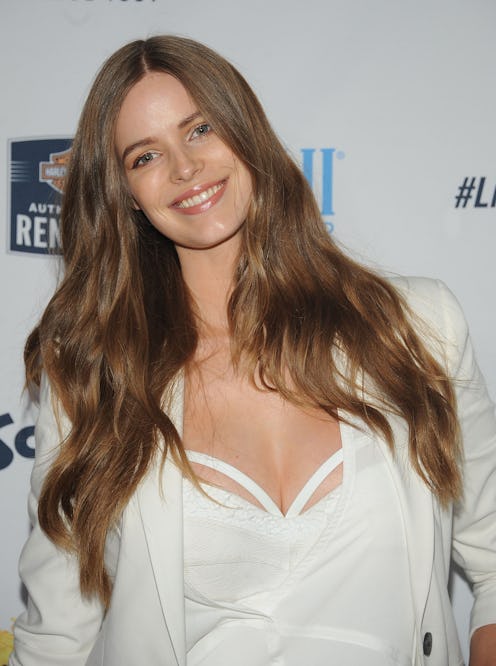Fashion
7 Truths About +Size Modeling In The '90s
Being a plus size model before plus size modeling existed as a mainstream concept was hard on Chelsea Bonner, but in her Aug. 8 Daily Mail Australia interview, Bonner revealed that she was glad to have been helping change minds about curvy frames during the "heroin chic" era of the fashion industry. Throughout the interview, Bonner explored topics like the role of the plus size model, the struggle that is trying to change societal perceptions of beauty, and how different she feels the modeling and fashion industries are today than they were in the '90s.
The modeling agency Bonner founded and directs, BELLA Models, is all about changing media and social perceptions of plus size women, and as a pioneer for plus size modeling, she feels that positive changes are already evident and becoming more and more frequent. One of the most famous models signed to BELLA, Robyn Lawley, has helped change beauty standards already by being the first plus size model to cover publications such as Sports Illustrated, GQ Australia, and Australian Vogue.
Although Bonner's words are directly about widely held perceptions of plus size models, her comments are reflective of the issues that everyday plus size women tackle on the regular. From enduring faux "health concerns" to flat out fatphobia, many of the problems of the '90s are still the problems of today. Granted, there are more plus size models in the public eye and on the catwalk than there were 20 years ago, but for the average woman without the "perfect" plus size frame, these seven issues Bonner encountered in the '90s remain all too relevant today.
1. "Our beautiful young women glowing with health are told everyday they need to drastically change something or other to fit the ‘mould.’"
"That's why it's so important we break it," she told The Daily Mail when discussing her sister's eating disorder. Her sister's experience with body image is one of the many things that made Chelsea Bonner realize how badly engrained the beauty standards that affect women in our society truly are.
2. "Because of our size we were considered irrelevant in terms of the beauty and fashion worlds."
Bonner explained that the build-up to introducing plus size modeling into the popular culture was slow because nobody had noticed the beauty to be found in bigger models before. This is arguably an issue that models, the fashion world, and the public still struggle with circa 2015.
3. "Where my mum was all long elegant limbs I was more of an athletic build and a lot curvier. By the time I was 16 my bras were two cup sizes bigger than mum's."
The child of model Nola Clark and actor Tony Bonner, Chelsea Bonner was in the public eye from the get go. Her body's difference to her mother's was arguably the opposite of what the media was expecting of her, and the direct confrontation of media and social beauty standards affected her deeply. Fear of not living up to beauty standards or parental expectations are issues most people, plus size or otherwise, face throughout their lives as well.
4. "That’s why people get so angry, because what was used as a standard of measurement in the garment industry has turned into the labelling of women, not clothes."
Bonner made an interesting point regarding the moniker "plus size" — which is perhaps an argument towards #droptheplus — exploring the dehumanizing nature of categorizing women due to their dress size.
5. "Most women around the world wear a dress size 12-16 so that hardly represents the need for a specialized category or term. By most I mean over 80 percent of women worldwide."
Bonner reflected on how what is seen as a "niche" or "minority" market could easily be one of the main markets if the industry truly catered to how the majority of women look.
6. "The perception was that we couldn’t possibly be happy with ourselves at that size."
This issue still rings true today. When friends try to compliment me by saying I look thinner, they don't understand that fat is not an insult for me. Just as fat doesn't have to mean unhealthy, it doesn't have to mean unhappy either.
7. "We need to [...] make sure that the idea of beauty that’s set across the board, is a healthy one for the future generations."
Chelsea Bonner sees her modeling agency BELLA Models at being at the forefront of trying to change beauty standards in the media. Creating a connection between "plus size" and "healthy" in a way that is educational, helpful, and positive is something that has been a part of the body positivity movement for years and is still highly relevant now.
The industry is undoubtedly changing, but looking back at its run in the '90s, it's not hard to see we still have a long way to go. If the positive changes that we're seeing are any indicator for good things to come, though, I'm staying optimistic.
